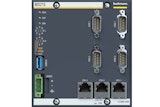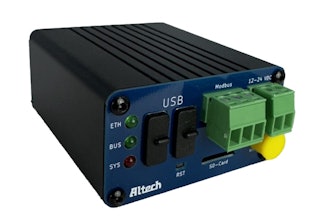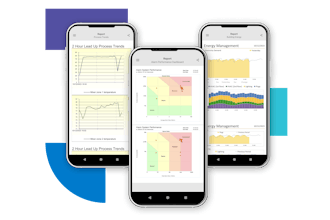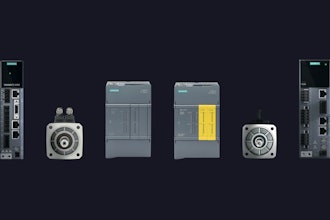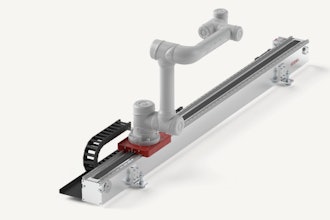
The world is changing quickly, and manufacturers are feeling it. Deloitte's 2023 Manufacturing Industry Outlook reports that problems with global supply chains, a skills shortage and rising costs have impacted manufacturers' optimism and trust in the industry, bringing the Manufacturing Outlook Index for 2023's second quarter to 55, down 4.2 points from the first quarter of 2022.
The uncertainty has led many manufacturers to increase their digital investment over the past few years and look to new technologies to help run business operations more efficiently and with greater visibility, ultimately making them more agile and competitive.
Alongside digitizing manufacturing operations with robotics and automation, manufacturers should look to their buyer-facing processes for technological investment, specifically with digital payments. By embracing digital payment solutions, manufacturers can unlock a range of business advantages beyond just transacting.
Here are three areas where manufacturers can see an immediate ROI from adopting digital payments:
1. Expand your buyer network
Traditional payment methods between manufacturers and distributors or other buyers often involve complex procedures. Even if a manufacturer displays their product list online to be more digitally friendly, the process still becomes fragmented when a buyer has to resort to phone calls or emails to request a purchase. The definition of "digital" in the context of B2B can also vary significantly, ranging from EDI to punch-out and digital commerce. The level of self-service also varies across these methods. For instance, while punch-out enables self-service transactions within the procurement system, the checkout process is not a consumer-like checkout but rather a transfer back to the buyer's procurement tool.
This approach may suffice, but it's not enough to align with the increasing demand for convenient, on-the-go payment experiences that enable buyers to fulfill their tasks as quickly and effortlessly as possible. With the rise of B2B e-commerce and marketplaces, coupled with the fact that only 34% of business buyers return to a B2B brand for repeat business (according to Merkle), the notion of a "barrier-to-buy" is no longer acceptable. As business buyers have more choices than ever before, loyalty is no longer a given. Buyers will choose to do business where it's easy to do so.
By implementing digital commerce payments, manufacturers can offer their buyers the convenience of the payment methods they want, automated invoicing, and even finance transactions with net terms. Moreover, they can do all this without taking on the risk in-house, as many digital payment solutions today include embedded financing.
Fully automating the payments process so that no manual intervention is required means that manufacturers can manage a larger buyer network with no added labor. And it also means that manufacturers can tap into a wider customer base, including younger business buyers who prefer e-commerce transactions for convenience and speed. An expanded buyer network translates into increased sales opportunities, higher revenues, and improved market reach, all while reducing workload.
2. Gather more data for better and faster decision-making
In today's competitive market, data is an invaluable resource. Manufacturers that leverage digital commerce payment solutions gain access to a wealth of transactional data that can be harnessed to make informed decisions. Unlike traditional payment methods, where keeping records is siloed and must be done manually, digital payments generate comprehensive records of each transaction and the surrounding data—automatically.
But given the fact that manufacturers often have more data than they know what to do with, it's essential to have a system that turns the raw data into insights. Further, offline and paper-driven payment processes, along with outdated back-office systems, are simply not conducive to making intelligent and strategic decisions regarding payment terms and products. Digital payment platforms offer advanced analytics tools and customizable reporting dashboards, allowing manufacturers to visualize and interpret data effortlessly.
They provide real-time access to payment method data, repayment history, and reconciliation reports, all conveniently available in one place. With these tools, manufacturers can not only enhance cash flow management but also make more informed strategic business decisions.
By leveraging a data-driven approach, manufacturers can gain a competitive edge and stay agile and resilient in the face of market changes, all while harnessing the power of insights to offer optimized and strategic payment solutions tailored to their buyer profiles.
3. Get back to your core competency and cut costs
Deloitte reports that 35% of businesses report high processing costs as a major challenge with traditional payment methods. And according to Gartner, the biggest benefit in digital buyer-seller sales interactions is lower payment processing costs due to improved data quality and fewer time-consuming manual processes. That makes perfect sense. By automating administrative payment tasks, manufacturers can effectively redirect their efforts towards core activities such as designing, producing, and delivering high-quality products. Not only does this shift in focus allow them to allocate more time and resources to their core competencies, but it also brings about significant cost and time savings.
Digital payment platforms can streamline various financial tasks, including invoicing, payment reconciliation, and cash flow management, and provide visibility into where and from who payment is owed. These improved processes eliminate the need for manual data entry, minimize the risk of errors, and accelerate transaction processing times. Moreover, a manufacturing business spending less time on administrative tasks can instead spend that time on innovation and new product development. And if manufacturers believe that there are no tangible key performance indicators (KPIs) associated with digital payment initiatives, they need to reconsider. Manufacturers can track metrics such as reduced processing time, decreased error rates, faster payment collection, and increased transaction accuracy.
A common misconception in digitization is the belief that technology adoption alone can facilitate fast progress while maintaining analog processes and outdated systems. However, to remain competitive, manufacturers must acknowledge the necessity for transformation. By embracing new systems tailored for ecommerce channels, manufacturers can streamline their operations, enhance efficiency, and capture growing business opportunities through digital channels.
